"We hear of children kidnapped as pets or servants, of a woman chained up like an animal in a sheperd's hut, of men castrated to keep them off their own women. In one foray seventy aborigines were killed, the men shot, the women and children dragged from crevices in the rocks to have their brains dashed out. A man called Carrotts, desiring a native woman, decapitated her husband, hung his head around her neck and drove her home to his shack."
http://aso.gov.au/titles/documentaries/dreamtime-machinetime/clip1
http://aso.gov.au/titles/documentaries/alyawarre-country/clip3/
http://www.creativespirits.info/resources/movies/first-australians.html
http://www.sbs.com.au/firstaustralians/



above left: my grandmother, Lucy Williams (nee Pike) who some "respectable" members of the family say has no aboriginal blood."
Truganinni
tp://www.youtube.com/watch?v=_DL6A_CtO7c
http://en.wikipedia.org/wiki/Timeline_of_Aboriginal_history_of_Western_Australia
Relations between Aboriginal and white Australians before the 1920s had been marked by several massacres, the most infamous being the Myall Creek massacre of 1838. The 1920s unfortunately saw the violence between the groups continue and the miscarriages of justice grow more disturbing. The Coniston Massacre of 1926 was the last recorded massacre of Aboriginal people by white Australians. Although none of the perpetrators of the crime were brought to justice, the Australian public was outraged - the killing of innocent people was an act never to be repeated.
Although there are many different accounts of the events, it was a turning point in Aboriginal-white Australian relations. The massacre remains a tragic event in Aboriginal history and the senseless loss of life is still commemorated today. Indigenous Australians called the 1920s 'The Killing Times'.
Precursor to the Coniston Massacre - The Kimberley
Although there were many massacres punctuating the Aboriginal-white Australian relationship since Europeans began to settle in Australia, the 1920s saw a sudden spike in violence in Western Australia and the Northern Territory.
In 1926, a group of Aboriginal people killed a man called Hay in the Kimberley in Western Australia. Four 'police constables', Hay's partner, a man named Overheu, and seven Indigenous Australians went to arrest the murderers and bring them to trial. The group arrested 30 Aboriginal people, tied them together by the neck, murdered them and burned their bodies in campfires. An Aboriginal employee who witnessed the murders was then killed by Overheu.
Although no one spoke of the atrocity after it was committed, rumours soon made their way to the Royal Commissioner G.T. Wood S.M., who was appointed as overseer of an enquiry made by the Western Australian government. Since none of the white Australians involved gave evidence against each other, no one could be implicated in the murders. Therefore, no one was punished.
This was the trend that had been established by the time of the Coniston Massacre - Aboriginal Australians would commit a crime, policemen would be sent into the bush to arrest them and bring them to trial. Instead, the policemen would murder not only the Aboriginal people involved but anyone else who was around at the time.
John Ah Kit, Member of the Northern Territory Legislative Assembly described the situation in a speech on 9 October 2003:
It must be remembered that the late 1920s was a time of major drought and therefore, in the context of what was still very much the frontier of black/white relations in Australia, the conflict over resources was intense. It was a conflict between the land and its people; and the cattle, and those who had brought with them the guns and diseases that followed. What is often misunderstood is that the Coniston Massacre was no single event, but a series of punitive raids that occurred over a number of weeks as police parties killed indiscriminately.
Coniston Massacre
See Image 1
During the 1920s, white Australians began settling on farms in the outback. These white Australians often intruded onto traditional Aboriginal land.
In August 1928, white Australian graziers had moved into country occupied by the Walpari tribe. One white Australian who moved into this area was Fred Brooks, a dingo hunter. He lived near Coniston Station, an area occupied by both white Australians and Aborigines.
Fred Brooks was killed by Walpari tribesmen. The reasons for his murder vary from accusations that Brooks had kidnapped some of the tribal women, to a tribesman being angry that his wife had slept with Brooks, to a disagreement over a deal for tobacco and sugar rations. Nevertheless, Brooks was killed by an Aboriginal man called Bullfrog at a place now called Brooks Soak, 21km south of Coniston Station.
Brooks' body was found stuffed into a rabbit hole. Reports of his murder were sent via telegraph to the police. Eventually the murder became described as 30-40 Aboriginal people ambushed Brooks, murdered him, chopped up his body into little pieces and attempted to hide the evidence by shoving the pieces into a rabbit hole.
In Alice Springs, J.C. Cawood sent Constable W.G. Murray to Coniston Station to arrest the murderers of Fred Brooks and any Indigenous Australians who had been spearing the cattle of the new European settlers. Murray had served in the First World War as a Victorian Mounted Rifleman at Gallipoli. Upon returning to Australia after the war had ended, Murray signed up as a policeman.
When Murray arrived in Coniston, he arrested two Aboriginal people who were later acquitted. He then continued his search around the area and on several separate occasions shot and killed members of the Walpari, Anmatjere, and Kaytej tribes. The people he killed included women and children and people who had nothing to do with the murder of Fred Brooks or the spearing of cattle. The official death toll stands at 31; however Aboriginal oral tradition records almost 90 dead. It is difficult to gauge an accurate amount as the killings were conducted in a series of raids - the first raid killed 17, the second 14, and so forth. It is agreed that the police killed up to 100 Indigenous Australians.
The impact of the killings on the Aboriginal groups in the area was significant: the killings upset the land holding, religious groups, destabilised land tenure, ceremonial life, exchange networks and religious ceremonies.
The miscarriage of justice
An enquiry was held into the massacre due to the disgust felt by white Australians and missionaries. Prime Minister Bruce appointed three government officials - a police magistrate from Cairns, a police inspector from Oodnadatta in South Australia, and Cawood himself. They were to enquire into Cawood's orders and how efficiently Murray and his team fulfilled those orders. No one questioned or represented the feelings of the outraged missionaries, white Australians or of the local Aboriginal groups. The findings of the enquiry did nothing to bring Murray and his men to justice.
See Image 3
An article published in the Tasmanian Mercury on 31 January, 1929, gave an overview of the case and the massacre. The article reflects the attitude of the board members who believed that the massacre was justified - the Aboriginal people were in the wrong. Today, this article can be read as a racist attack, however, it is important to recognise that this attitude was common to many Australians in the 1920s.
The article upholds the evidence given by Murray and his accomplices that they were acting in self-defence and had not massacred the Aboriginal people. The article believes their testimony and describes the killing of innocent Indigenous Australians as an act of self-defence:
'Giving its view that the three shootings were justified, the Board indicated that it accepted the evidence of Mounted Constable Murray, Tracker Paddy, Morton and several reputable settlers, that the shots which altogether resulted in the deaths of 21 blacks, had been necessary in self-defence. On occasions it had been shown that blacks had attacked the police parties with boomerangs, spears, nulla-nullas and tomahawks.'
Contrary to what is now considered a massacre the board found that the Aboriginal people were guilty for their attacks on white men and that these attacks, in turn, were the fault of white Australian missionaries:
'The Board found that no provocation had been given to the aborigines which could account for their attacks on white men. In its opinion the reason for the blacks' action was first, that the Walmulla tribe had advanced on a marauding expedition from the border of West Australia to the Coniston country, threatening to wipe out settlers and working boys. Unattached missionaries wandering from place to place with no previous knowledge of the blacks, and preaching a doctrine of equality and inexperienced settlers making free with the blacks and treating them as equals, had been responsible for the trouble. The presence of a woman missionary living among native blacks had lowered their respect for white people.
The legacy of the Coniston Massacre
Although no guilty party was punished, the publicity that the case was given and the national and international outrage that followed ensured that this would be the final massacre of Indigenous Australians. The bloody history of massacres carried out on Aboriginal Australians by white Australians had come to an end. The injustices perpetrated by the judicial system would not be tolerated again.
Today, the legacy of the Coniston Massacre lives on. It is an important event for Aboriginal-white Australian reconciliation. Each year, a memorial is held to tell the sad story to a new generation so that through knowledge of the massacre, future tragedies can be avoided.assacre of Aboriginals
...........................................................................................................................................................
THE BLACK FAMILY IN TASMANIA
The Tasmanian aborigines were hunter-gatherers with an exceptionally basic technology. The Tasmanians made only a few types of simple stone and wooden tools. They lacked agriculture, livestock, pottery, and bows and arrows.
The Black family in Tasmania was a highly organized one--its form and substance directed by custom. A man joined with a woman in marriage and formed a social partnership with her. It would appear that such marriages were usually designed by the parents--but this is something about which very little is actually known. The married couple seems to have remained together throughout the course of their lives, and only in rare cases did a man have more than one wife at the same time. Their children were not only well cared for, but were treated with great affection. Elders were cared for by the the family, and children were kept at the breast for longer than is usual in child care among Europeans.
THE BEGINNING OF THE END OF THE BLACKS
The isolation of Tasmania's Black aborigines ended in 1642 with the arrival and intrusion of the first Europeans. Abel Jansen Tasman, the Dutch navigator after whom the island is named, anchored off the Tasmanian coast in early December, 1642. Tasman named the island Van Diemen's land, after Anthony Van Diemen--the governor-general of the Dutch East India Company. The island continued to be called Van Diemen's Land until 1855.
On March 5, 1772, a French expedition led by Nicholas Marion du Fresne landed on the island. Within a few hours his sailors had shot several Aborigines. On January 28, 1777, the British landed on the island. Following coastal New South Wales in Australia, Tasmania was established as a British convict settlement in 1803. These convicts had been harshly traumatized and were exceptionally brutal. In addition to soldiers, administrators, and missionaries, eventually more than 65,000 men and women convicts were settled in Tasmania. A glaringly inefficient penal system allowed such convicts to escape into the Tasmanian hinterland where they exercised the full measure of their blood-lust and brutality upon the island's Black occupants. According to social historian Clive Turnbull, the activities of these criminals would soon include the "shooting, bashing out brains, burning alive, and slaughter of Aborigines for dogs' meat."
PART 2
TASMANIAN DEVILS IN HUMAN FORM
As early as 1804 the British began to slaughter, kidnap and enslave the Black people of Tasmania. The colonial government itself was not even inclined to consider the aboriginal Tasmanians as full human beings, and scholars began to discuss civilization as a unilinear process with White people at the top and Black people at the bottom. To the Europeans of Tasmania the Blacks were an entity fit only to be exploited in the most sadistic of manners--a sadism that staggers the imagination and violates all human morality. As UCLA professor, Jared Diamond, recorded:
"Tactics for hunting down Tasmanians included riding out on horseback to shoot them, setting out steel traps to catch them, and putting out poison flour where they might find and eat it. Sheperds cut off the penis and testicles of aboriginal men, to watch the men run a few yards before dying. At a hill christened Mount Victory, settlers slaughtered 30 Tasmanians and threw their bodies over a cliff. One party of police killed 70 Tasmanians and dashed out the children's brains."
Such vile and animalistic behavior on the part of the White settlers of Tasmania was the rule rather than the exception. In spite of their wanton cruelty, however, punishment in Tasmania was exceedingly rare for the Whites, although occasionally Whites were sentenced for crimes against Blacks. For example, there is an account of a man who was flogged for exhibiting the ears and other body parts of a Black boy that he had mutilated alive. We hear of another European punished for cutting off the little finger of an Aborigine and using it as a tobacco stopper. Twenty-five lashes were stipulated for Europeans convicted of tying aboriginal "Tasmanian women to logs and burning them with firebrands, or forcing a woman to wear the head of her freshly murdered husband on a string around her neck."
Not a single European, however, was ever punished for the murder of Tasmanian Aborigines. Europeans thought nothing of tying Black men to trees and using them for target practice. Black women were kidnapped, chained and exploited as sexual slaves. White convicts regularly hunted Black people for sport, casually shooting, spearing or clubbing the men to death, torturing and raping the women, and roasting Black infants alive. As historian, James Morris, graphically noted:
"We hear of children kidnapped as pets or servants, of a woman chained up like an animal in a sheperd's hut, of men castrated to keep them off their own women. In one foray seventy aborigines were killed, the men shot, the women and children dragged from crevices in the rocks to have their brains dashed out. A man called Carrotts, desiring a native woman, decapitated her husband, hung his head around her neck and drove her home to his shack."
..........................................................................................................................................................
PERTH, Australia (AP) — The remains of 19th-century Aboriginal warrior Yagan have been laid to rest in western Australia, nearly 180 years after he was killed and his severed head was displayed in a British museum.
The private ceremony held Saturday by the Noongar tribe coincided with the opening of the Yagan Memorial Park in Swan Valley, just outside of Perth.
"The Yagan Memorial Park is a fitting tribute to the life, struggles and death of Yagan and to the memory of all Aboriginal people who suffered and died in support of their land, culture and heritage," West Australian Premier Colin Barnett said in a statement.
Yagan was shot by a European settler in 1833. His body was believed to be buried in Swan Valley but his head was taken to England, where it sat in a museum for a century before being buried in an English cemetery.
Read more:
http://www.latimes.com/news/nationworld/world/wire/sns-...
There is a parallel of the treatment of Australian Aborigines to the treatment by early Spanish colonists in America for example:
“With my own eyes I saw Spanianrds cut off the nose, hands and ears of Indians, male and female, without provocation, merely because it pleased them to do it … Likewise, I saw how they summoned the caciques and the chief rulers to come, assuring them safety, and when they peacefully came, they were taken captive and burned.”
-Bartolome De Las Casas, The Devastation of the Indies, 1552
“(The Spaniards) took babies from their mothers’ breasts, grabbing them by the feet and smashing their heads against rocks … They built a long gibbet, low enough for the toes to touch the ground and prevent strangling, and hanged thirteen at a time in honor of Christ Our Savior and the twelve Apostles … Then, straw was wrapped around their torn bodies and they were burned alive. They threw into those holes all the Indians they could capture of every age and kind … Pregnant and confined women, children, old men (were) left stuck on the stakes, until the pits were filled … The rest they killed with lances and daggers and therew them to their war dogs who tore them up and devoured them. When the Spaniards had collected a great deal of gold from the Indians, they shut them up in three big houses, crowding in as many as they could, then set fire to the houses, burning alive all that were in them, yet those Indians hand given no cause nor made any resistance.”
-Bartolome De Las Casas, The Devastation of the Indies, 1552
I can't find it now, but Columbus also wrote in his log how he whipped and then "had his way" with the women. We celebrate this genocidal rapist every year. Get the word out. Time to recliam our HERitage from HIStory.


 above left: my grandmother, Lucy Williams (nee Pike) who some "respectable" members of the family say has no aboriginal blood."
above left: my grandmother, Lucy Williams (nee Pike) who some "respectable" members of the family say has no aboriginal blood."

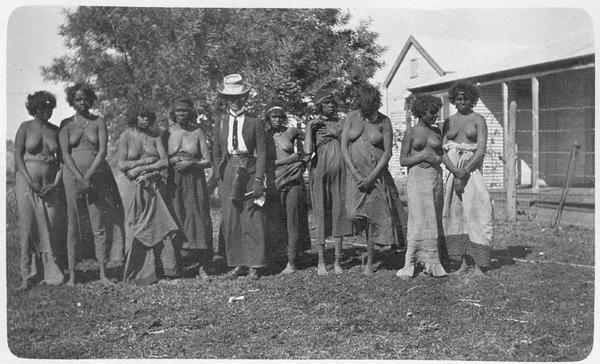



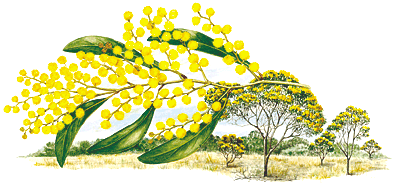


+copy.jpg)










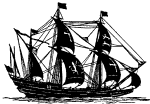





















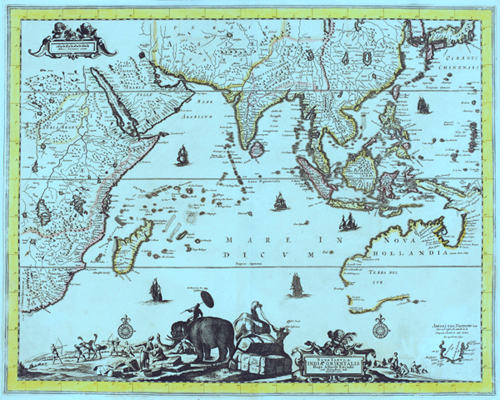





















.jpg)
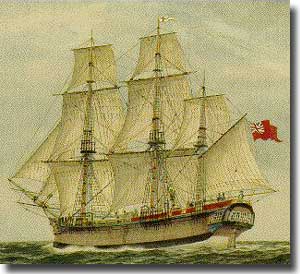

























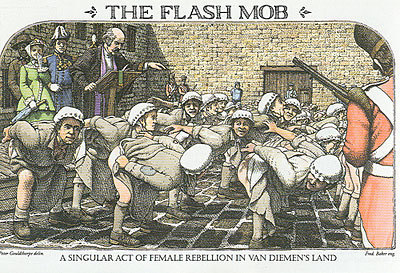
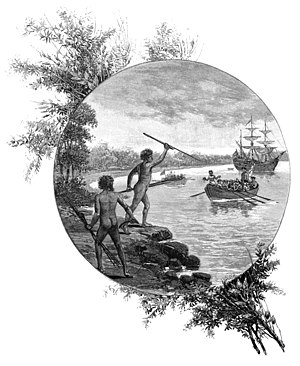 G
G







.jpg)
















No comments:
Post a Comment